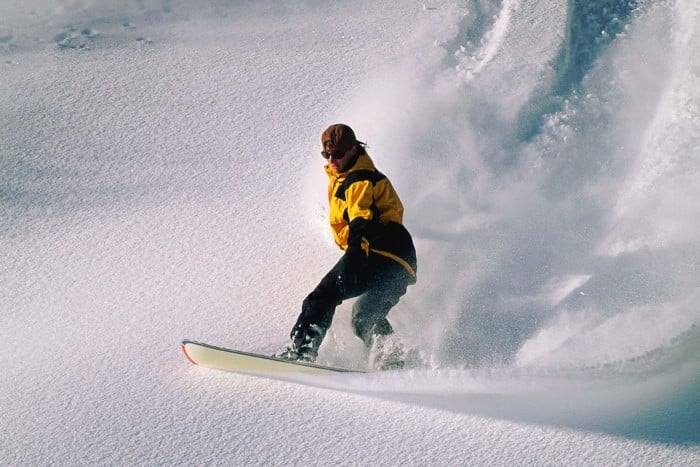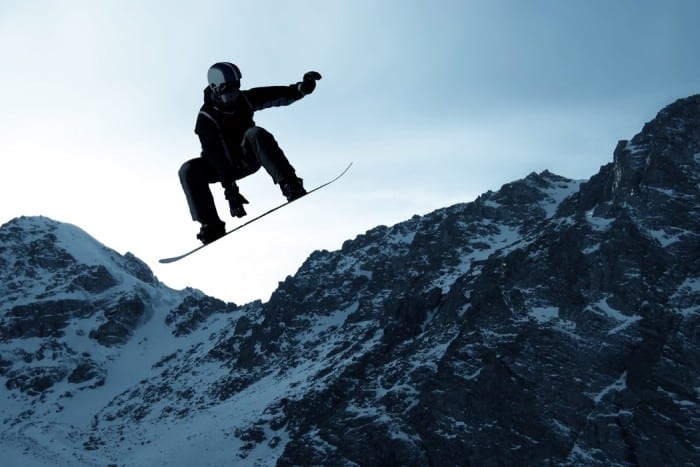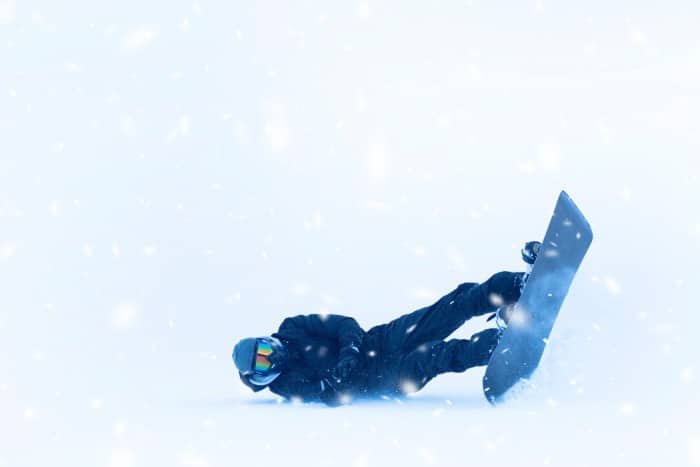As snowboards come in a range of lengths, it’s normal to worry whether or not yours is the right size. This can be especially true for beginners who might be concerned that a wrong-sized board might be holding back their progression.
While a shorter snowboard can come with a range of benefits, such as easier tricks and turning, a board that’s too small can cause issues. A lack of stability at high speeds or on certain terrain, heel and toe drag, and lower durability might mean you need to trade your snowboard in for a longer one.
Today, we’re going to look at why a shorter snowboard could be just the thing you need to improve your riding and how to tell when a board really is too small for you.
Why A Shorter Snowboard Isn’t Necessarily A Bad Thing?
It’s a common misconception that the correct snowboard size is based on your height.
Many rental shops fall into the lazy habit of eyeing up a customer and only taking their height into consideration before handing them a board off the rack.
The truth is that your height is probably the last factor to consider when selecting the right snowboard, and your weight, ability level, terrain, and riding style are all more important things to consider.
So, bearing that in mind, there’s no need to panic right away if you think your snowboard might be shorter than it should be or smaller than what you’re used to riding.
Let’s take a look at a few reasons why you might need a shorter snowboard and how it might be a blessing in disguise.
1. Easier Turns
A shorter snowboard is much easier to control at lower speeds than a longer one. The naturally deeper sidecuts make turning a more forgiving affair and allow for swifter braking.
As a beginner, being able to turn more sharply makes it a bit easier to tackle snowboarding’s notoriously steep learning curve and build confidence before moving on to a longer board if you feel like it.
That being said, some riders prefer to stick to a smaller snowboard regardless of their ability level.
If you’re someone who loves tree runs and weaving in and out of natural obstacles, a shorter snowboard makes this a much easier and more exciting experience.

2. Flex
Generally, shorter snowboards are more flexible than longer boards. Like the deeper sidecuts, this extra flex makes turning much easier, especially when starting out.
Due to the nature of stiffer snowboards, they transmit more of your foot and body motion through the board, which means even the smallest mistake can result in a caught edge and a crash.
On the other hand, boards with more flex are more forgiving, so the odd error here and there isn’t the end of the world.
Shorter, more flexible snowboards are also great if you like executing butter tricks on slopes with lower inclines.
You’ll find it takes much less work to press on the nose and tail of the board, to lean back into manuals, and to pop ollies off the ground with a smaller board that isn’t as stiff as its longer counterparts.
3. Freestyle
Shorter boards are also favored by those who love to spend their days ripping through the park.
Aside from the butter tricks mentioned above, smaller boards are lighter and less cumbersome, which makes them ideal for freestyle.
Their lower weight and extra flexibility make it much easier to catch bigger air off smaller kickers and pop up onto rails and sliders while remaining steady and balanced.
They’re also better for rotational tricks such as 360s, and the lack of stability at higher speeds isn’t an issue in the park.
That more forgiving nature of a shorter board is also a godsend when you’re trying out some new tricks and can’t guarantee a perfect landing every time.
Even if your finish doesn’t look pretty, it’s better than hurting yourself.

What If My Snowboard Is Too Small?
Despite there being a number of benefits to riding a shorter snowboard, that doesn’t mean there’s no such thing as a board being too small.
These are a few downsides of a shorter board and some tell-tale signs that you may want to consider sizing up.
1. Durability
Most materials that are designed to be stiff will eventually lose that stiffness over time and use, and snowboards are no different.
Longer boards are heavier and stiffer, so while they will become more flexible over time, they will have a naturally longer life than shorter boards that tend to be lighter and a bit more fragile.
As board length is generally selected based on weight, this process might be sped up if you’re a heavier rider.
Given that the majority of shorter snowboards are being put through their paces in the park, it stands to reason that sooner or later, the materials will give way and break.
However, that’s just the price to be paid for freestyle snowboarding.
If you notice your board starting to crack or flex more than it should, it’s better to retire it early than risk it snapping at a time when you could do some serious damage to yourself.
2. Stability
While shorter snowboards are easier to control at lower speeds, they can be much less stable at higher velocities.
This is down to their shorter effective edges and lower overall contact with the snow due to their smaller surface area.
It’s still possible to ride quickly on a shorter board, but the chances of having an accident do increase, and you won’t be able to race as fast as someone on a longer board built for rapid carving.
Additionally, while shorter boards are great for freestyle, if you’re ramping things up and starting to hit the biggest kickers, hips, and pipes in the park, you need to remember that you’ll be coming into the landing with a lot more speed.
This means that you’ll need to strike a balance between a board that’s short and light enough to execute tricks and long and stiff enough to land with enough stability to ride out the landing.
3. Heel And Toe Drag
While this relates more to a snowboard’s width than its length, as a rule of thumb, snowboards become narrower the shorter they get.
If your board is too narrow, your heels and toes will extend too far over the edges, which increases the risk of them catching in the snow as you turn.
This might only slow you down as you ride, but there’s always a chance they’ll dig in too deep, and you’ll end up crashing.
4. Terrain
Due to their smaller surface area, shorter boards are great for hardpack and shallower snow, but they can struggle to stay afloat when it comes to deep powder.
If your board sinks into the deeper snow nose-first when your legs hit the snow, you’ll likely take a tumble, and getting back on your feet and onto the snow’s surface can be an exhausting challenge.
To an extent, a shorter board can fare a little better if you choose one with rocker tips that help it float above the snow.

Conclusion
So, in summary, riding a shorter board isn’t always bad, and riding a smaller board than you’re used to may provide a better snowboarding experience.
Having said that, if your board is genuinely too small for you, you may run into issues that could result in injury.
Unfortunately, if this is the case, you’ll need to swap it for a longer one at the rental shop or bite the bullet and sell it to invest in a longer snowboard better suited to you.
